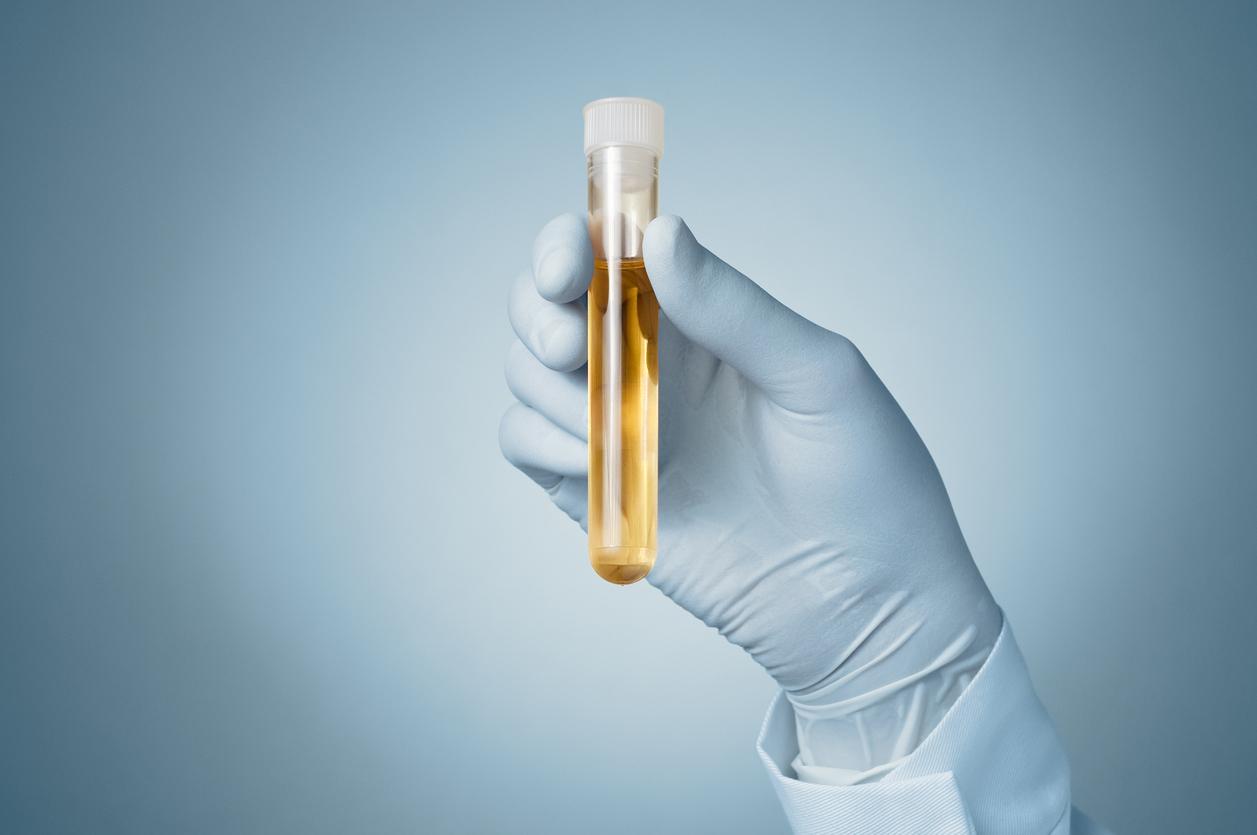- What is angina?
- Is it viral or bacterial angina?
- Types of angina (red, white, Vincent’s angina, angina pectoris…)
- What are the symptoms of angina?
- Rapid diagnostic tests for angina: how do they work?
- Is angina contagious?
- How to cure angina?
- What advice to relieve angina?
- How long does angina last?
- Angina: natural remedies?
- What are the complications of angina?
What is angina?
“L’angina in adults is an inflammation of the back of the throat. It is said to be chronic if it is recurrent. defines Dr. Yves-Victor Kamami, ENT doctor in Paris, former intern at hospitals in the Paris region. This infectious inflammation affects the tonsils (this is tonsillitis) and/or the entire oropharynx (pharyngitis).
Is it viral or bacterial angina?
There are two types of angina:
- I’viral anginathe most common, due to a virus ;
- I’bacterial angina due to a bacterium, most often a streptococcus.
Distinguish between viral angina and bacterial anginais important because their treatment is different.

Angina
Types of angina (red, white, Vincent’s angina, angina pectoris…)
In adults, in 90% of cases, angina is viral (due to adenovirus, myxovirus para-influenzae, influenza virus, etc.). “If the angina almost all start by being viral, some become superinfected within 48 hours”, says Dr. Kamami.
There are several types of angina:
- Erythematous angina (still sometimes called red angina) and erythemato-pultaceae (white angina) are the most common type of angina (80 to 90% of angina). Erythematous angina is characterized by a red throat, erythemato-pultaceous angina by a red throat and white spots on the tonsils.
- Pseudomembranous angina, which is indicated by the presence of a pearly or grayish coating on the tonsils, and which has two main causes: infectious mononucleosis and diphtheria
- Vesicular angina is characterized by the presence of small vesicles in the pharynx (they mainly affect children). Find out more: angina in children, what you need to know
- Ulcerative and necrotic ulcerative angina: there is an erosion at the level of the tonsil which can extend to the soft palate or to the posterior part of the oropharynx. The most common of these ulcerative or necrotic ulcerative angina is Vincent’s angina which develops in people with poor oral hygiene and is due to bacteria of dental origin, sometimes cavities.
To know : angina pectoris or Angor has nothing to do with ENT pathologies including angina. This is chest pain that occurs when there is insufficient blood flow to the heart due to heart disease.
What are the symptoms of angina?
Angina is signaled by:
- a spontaneous pain on one or both sides of the throat. Angina and sore throat are inseparable. This pain is increased when swallowing and can radiate into the ears (reflex otalgia).
- She is accompanied by fever, of variable intensity. It is rare to have angina without fever.
- more or less severe fatigue, sometimes shivers, general malaise.
“When there is pharyngeal pain, inflammation of the pharynx but no fever and this pain persists, it is necessary to think to gastroesophageal refluxacid reflux creating inflammation of the pharynx”, emphasizes the ENT doctor.

Angina
Rapid diagnostic tests for angina: how do they work?
If you have severe pain in the throat, difficulty swallowing and fever, it is recommended to consult your doctor. As this explains siteto distinguish viral angina bacterial anginathe doctor can make a rapid diagnostic test (RDT) group A ß-hemolytic streptococcus (SBHA) or Streptococcus pyogenes (SBHA), the main cause of bacterial angina.
This painless test gives a result in 5 minutes after a pharynx or tonsil swab. The test consists of a sampling with a kind of cotton swab, which is then placed in a tube containing a reagent. Depending on the color of the strip immersed in the liquid, the doctor will be able to determine whether the origin of the angina is a bacterium or not.. “This test allows us to know if the patient should be put on antibiotics.” The main purpose of antibiotic treatment is to prevent complications.
Read also:
- Angina: reimbursement of rapid tests in pharmacies
- Angina: when to consult a doctor?
Is angina contagious?
Both types of angina are contagious. “The bacterial tonsillitis are contagious by contact with the mucous membranes (if you kiss for example), on the other hand, viral angina is transmitted by air”says Dr. Kamami.
- If you have bacterial strep throat, you are no longer contagious 24 hours after starting antibiotics.
- If your angina is viral, you are contagious shortly before the onset of symptoms and throughout the duration of the symptoms.
In any case, when you have angina, to limit transmission, avoid direct contact (shaking hands, kissing), do not share your cutlery and glasses, wash your hands as much as possible and wear a mask if you have to take care of fragile people (babies, young children, elderly or sick people).
How to cure angina?
In some cases, the doctor may prescribe medication to treat angina. the treatment is different depending on whether the angina is viral or bacterial. “When angina is viral, the goal is to relieve pain and fever with paracetamol, informs Dr. Kamami. The trace elements (copper, gold, silver) are interesting to stop the viral infection before it becomes bacterial”he says.
Bacterial angina requires a antibiotic treatment to accelerate the disappearance of symptoms, limit contagion and prevent complications.

Angina
What advice to relieve angina?
“Start paracetamol at the first symptoms”, recommends Dr. Kamimi. You can additionally use paracetamol lozenges or mouthwashes (spray) containing an antiseptic and a local anesthetic to relieve pain. Ask your doctor or pharmacist.
It is also recommended to drink plenty and eat fresh food (yogurt, ice cream, etc.) which generally relieves the pain.
How long does angina last?
A angina lasts between 3 and 5 days. Bacterial or viral, it heals in a short week. Only group A streptococcal bacterial angina can be complicated:
- an abscess or phlegmon near the amygdala ;
- of a reaction immunological post-streptococcal resulting in a acute articular rhumatism or kidney damage (acute glomerulonephritis).
In order to prevent these rare but potentially serious complications, the prescription of an antibiotic is justified to treat a group A strep throat.
Angina: natural remedies?
the lemon and honey are two essential natural remedies. It is possible to swallow slowly a spoon of pure thyme or lavender honey with antiseptic and antibacterial properties or prepare a tisane with a spoon of these same honeys. Lemon can be used to make gargles: pour the juice of a freshly squeezed lemon into a glass, then top up with very hot water.
You can also prepare a very beneficial infusion made from cinnamon or cloves with a pinch of pepper and sweetened with honey.
What are the complications of angina?
Bacterial angina can lead to complications if not treated quickly. There may thus be an abscess of the tonsil (phlegmon). The tonsil is bulging, the person cannot open the jaw (trismus), high fever. “If the phlegmon is not ripe, antibiotic treatment in high doses is prescribed, if it is ripe, surgery is needed to incise it and thus evacuate the pus”, indicates the ENT doctor.
“A angina of dental origin can give rise to a cervical cellulitisvery severe infection with swelling of the tissues of the neck”, he adds.
Complications of strep throat consist of poststreptococcal syndromes: acute rheumatic fever (AAR), acute glomerulonephritis (AGN) and local or general septic complications. “These complications have become rare these days thanks to antibiotics”, reassures Dr. Kamami.
Sources:
- Interview Dr Yves-Victor Kamami, ENT doctor in Paris, former intern at hospitals in the Paris region, October 2021.
- UE6 n°146, Angina in adults and children, nasopharyngitis in children, ECN. pilly, 2018
- Ameli
Read also:
- Otitis in adults: symptoms, contagion, what to do?
- Loss of voice: causes, duration, what to do?
- Cold: symptoms, duration, treatments
- Oily cough, dry cough, nocturnal cough…: how to calm them?
- Flu: symptoms, treatments, contagion


















